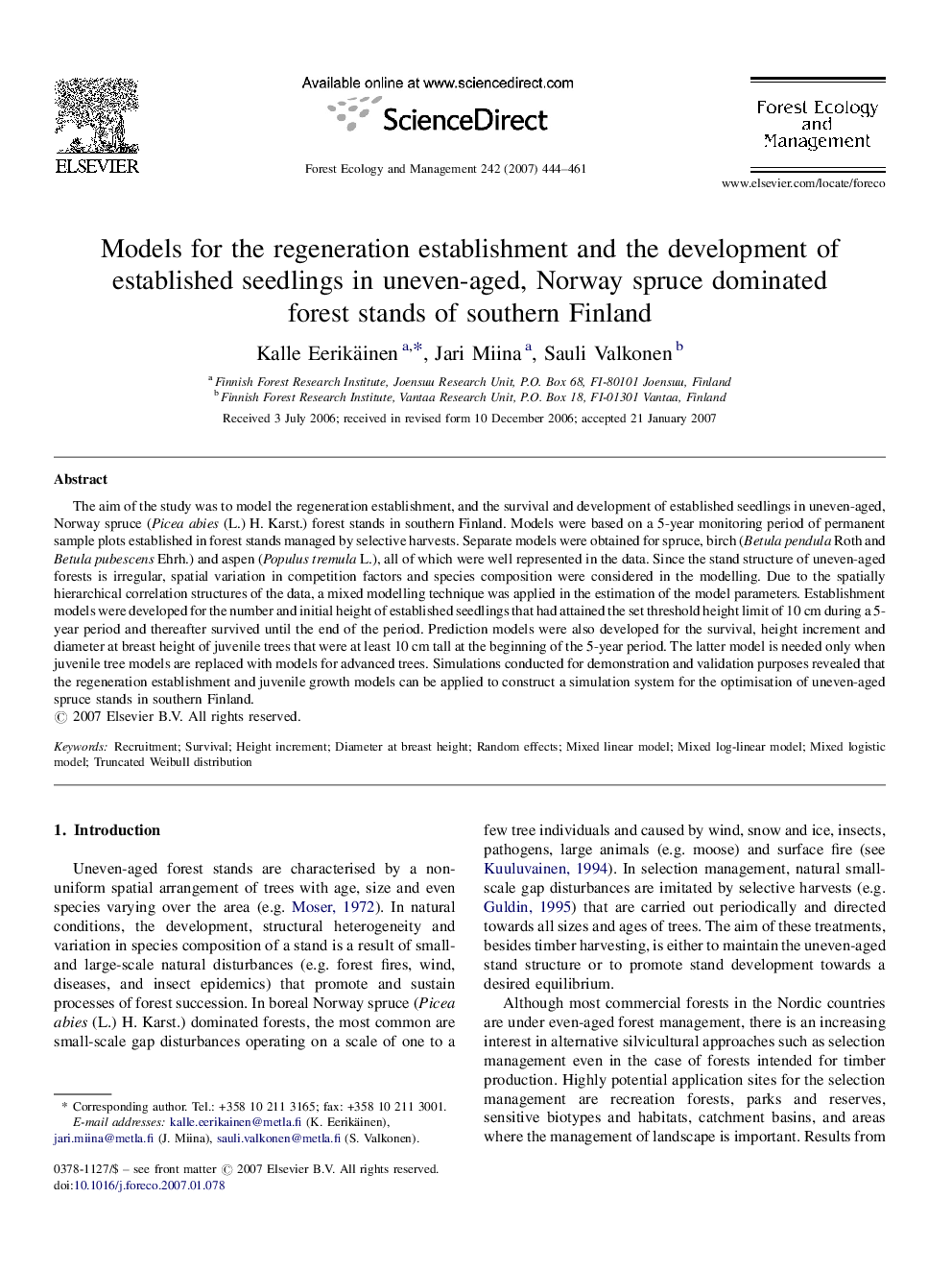| Article ID | Journal | Published Year | Pages | File Type |
|---|---|---|---|---|
| 90656 | Forest Ecology and Management | 2007 | 18 Pages |
The aim of the study was to model the regeneration establishment, and the survival and development of established seedlings in uneven-aged, Norway spruce (Picea abies (L.) H. Karst.) forest stands in southern Finland. Models were based on a 5-year monitoring period of permanent sample plots established in forest stands managed by selective harvests. Separate models were obtained for spruce, birch (Betula pendula Roth and Betula pubescens Ehrh.) and aspen (Populus tremula L.), all of which were well represented in the data. Since the stand structure of uneven-aged forests is irregular, spatial variation in competition factors and species composition were considered in the modelling. Due to the spatially hierarchical correlation structures of the data, a mixed modelling technique was applied in the estimation of the model parameters. Establishment models were developed for the number and initial height of established seedlings that had attained the set threshold height limit of 10 cm during a 5-year period and thereafter survived until the end of the period. Prediction models were also developed for the survival, height increment and diameter at breast height of juvenile trees that were at least 10 cm tall at the beginning of the 5-year period. The latter model is needed only when juvenile tree models are replaced with models for advanced trees. Simulations conducted for demonstration and validation purposes revealed that the regeneration establishment and juvenile growth models can be applied to construct a simulation system for the optimisation of uneven-aged spruce stands in southern Finland.
